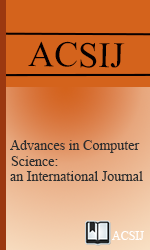Detecting Communities and Surveying the Most Influence of Online Users
Abstract
Social network is a virtual environment that provides services for connecting users with the same interests, points of view, gender, space and time. Beside connection, information exchange, communication, entertainment and so on. Social network is also an environment for users who work in online business, advertisement or politics, criminal investigation. How to know what users discuss topics via exchanged contents and communities which users join in? In this paper, we propose a model by using topic model combined with K-means to detect communities of online users. Each user in social network is represented by a vector in which the components are the distribution probabilities of interested topics of that user. Based on the components of this vector, we discover the interested topics of online users to detect communities and survey users who are the most influence in communities to recommend for spreading information on social network.
Keywords
Full Text:
PDFReferences
J.Leskovec, L.A.Adamic, and B.A.Huberman, (2007). “The dynamics of viral marketing”. In ACM Trans, volume 1.
Muon Nguyen, Thanh Ho, Phuc Do (2013), Social Networks Analysis Based on Topic Modeling, The 10th IEEE RIVF International Conference on Computing and Communication Technologies (P.119-122), Hanoi.
P.Domingos and M.Richardson, (2001), “Mining the network value of customers”. In Seventh ACM SIGKDD International Conference on Knowledge Discovery and Data Mining, KDD 01, pages 57–66, New York, NY, USA.
Mr. Sachan, D. Contractor, T.A. Faruquie, L. V.Subramaniam, (2009), Using Content and Interactions for Discovering Communities in Social Networks. April 16–20, 2012, Lyon, France.
Andrew McCallum, Andrés Corrada-Emmanuel, Xuerui Wang (2007), Topic and Role Discovery in Social Networks, Journal of Articial Intelligence Research 29.
M. Sachan, D. Contractor, T. A. Faruquie, and L. V.Subramaniam. Probabilistic model for discovering topic based communities in social networks. 2011.
Chunshan Li, William K. Cheung, Yunming Ye, Xiaofeng Zhang, Dianhui Chu, Xin Li (2014), The Author-Topic-Community model for author interest profiling and community discovery, Springer-Verlag London 2014, pp. 74-85.
The Anh Dang, Emmanuel Viennet (2012), Community Detection based on Structural and Attribute Similarities, ICDS 2012 : The Sixth International Conference on Digital Society, pp. 7-14.
David M.Blei, (2003), “Latent Dirichlet Allocation”. Computer Science Division, University of California, Berkeley, CA.
Andrew McCallum, Andr´es Corrada, Xuerui Wang, (2004), The Author-Recipient-Topic Model for Topic and Role Discovery in Social Networks: Experiments with Enron and Academic Email, Department of Computer Science, University of MA.
http://en.wikipedia.org/wiki/K-means_clustering
Tom Griffiths (2004), Gibbs Sampling in the Generative Model of Latent Dirichlet Allocation - Gruffydd@psych.stanford.edu.
B. Walsh, (2004), “Markov Chain Monte Carlo and Gibbs Sampling”. Lecture Notes for EEB 581, version 26 April 2004.
William M. Darling, (2011), “A Theoretical and Practical Implementation Tutorial on Topic Modeling and Gibbs Sampling”. School of Computer Science University of Guelph.
N. Pathak, C. DeLong, A. Banerjee, and K. Erickson (2008), Social topic models for community extraction. The 2nd SNA-KDD Workshop, vol 8.
Tran Quang Hoa, Vo Ho Tien Hung, Nguyen Le Hoang, Ho Trung Thanh, Do Phuc (2014), Finding the Cluster of Actors in Social Network based on the Topic of Messages, ACIIDS 04/2014, ThaiLan. Springer, pp. 183-190.
 Advances in Computer Science : an International Journal
Advances in Computer Science : an International Journal







